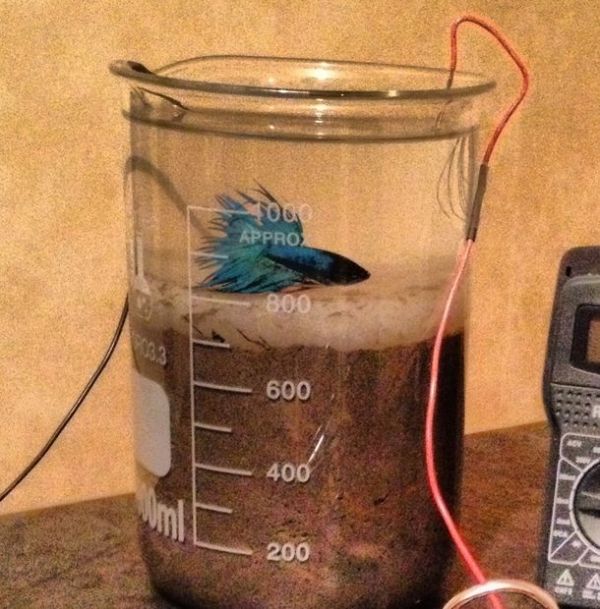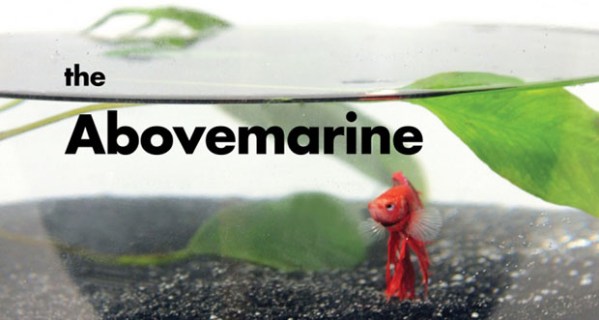Move over, potato batteries: DIY microbial fuel cells are here to stay! A microbial fuel cell (MFC) is a device that uses bacteria in an anaerobic (oxygen-poor) environment to convert chemical energy into electricity. [drdan152] posted steps on how to make a soil-based MFC with a neat twist: it’s also a fishbowl for a betta fish.
[drdan152] used soil from the wetlands, referred to as “muck.” This nutrient-rich soil provided a hearty supply of bacteria, especially Geobacter species, known for their uncanny ability to transport electrons outside their cells using bacterial nanowires. The proton exchange membrane (PEM) was made up of salt, water, and agar. After some initial runs, [drdan152] determined that flat char cloth made the best anode, while red copper wire served as the cathode. Assembling the MFC was as simple as surrounding the anode with a thick layer of muck on all sides, adding the PEM on top, followed by water. The cathode was situated halfway out of the water.
After a couple of days, the voltage increased in proportion to the amount of bacteria growing on the anode. The betta fish can happily live in this habitat for a short period of time(it still has to be fed, of course), and the bacteria certainly won’t mind – the fish’s excrement provides an additional food supply. As a bonus, the water is kept clean. However, like any aquarium, the water will need to be changed periodically as carbon dioxide byproduct accumulates from the fish’s respiration and the MFC (high carbon dioxide levels = dead betta fish).
The MFC generates 725 mV. [drdan152] is not satisfied with that number, and is testing out charge pump circuits to generate as much as 3V. We are looking forward to seeing the results. We also wonder if a small aquatic plant could help make it a more self-sustaining environment for the fish. In the meantime, [drdan152] is encouraging others to try larger-scale versions of this MFC. Perhaps MFC-powered carnivorous robots doubling as mobile aquariums are in our near future.












